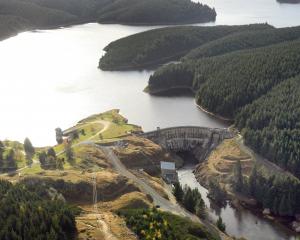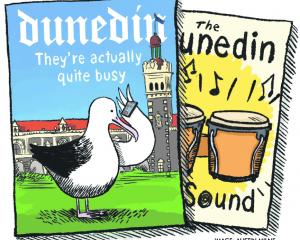
Port of Tauranga, New Zealand's biggest port company, posted a 13% rise in annual profit, driven by record cargo volumes, and said it is planning to expand capacity.
Conversely Lyttelton Port Company's annual profit fell as strike action and costs of hiring additional staff outweighed higher revenue.
At the Port of Tauranga revenue increased 10.9% to $283.7million and net profit rose 13% from $83.4million a year ago to $94.3million.
At Lyttelton Port Company, revenue rose 7% to $122million, but lagged behind the $126million flagged in its statement of intent, while net profit fell 16.6% from $14.4million to $12million.
Forsyth Barr broker Suzanne Kinnaird said Tauranga delivered a "strong result", in line with expectations, with its underlying profit gain of 123% driven by cargo growth of 11%.
"Port of Tauranga has recorded a second year of meaningful earnings growth, driven by cargo volumes," she said.
Tauranga's container volumes lifted 8.9% to nearly 1.2million twenty-foot equivalent units (TEUs), and overall cargo was up 10.2% to almost 24.5million tonnes.
Tauranga's chief executive Mark Cairns said in the annual report the company's expansion programme to accommodate larger vessels, coupled with New Zealand's buoyant economy, resulted in the 10.2% increase in cargo volumes.
Volumes lifted across all major cargo categories, with export logs up 14.3% in volume and dairy products up 4%.
Tauranga paid a final dividend of 7c, taking total dividends to 12.7c, up 13.4% on a year ago.
Mrs Kinnaird noted capital expenditure guidance of $60 million was ahead of expectations and was "cautious" that continued cargo growth would be sustained, and might decline in the financial year ahead.
Lyttelton Port Company chief executive Peter Davie said its revenue increase was mainly driven by the port's container terminal and MidlandPort, its inland port at Rolleston.
Profitability was impacted by strike action, hiring additional staff in the container terminal to meet customer demand, and more investment in health and safety, he said.
The port company did not say whether it would pay a dividend to the Christchurch City Council.
It paid $8million in dividends in 2017, and had targeted a 2018 payment of $1million in its statement of intent.
Container volumes rose 5.7% to 424,560 TEUs and would have been higher, but industrial action in March and April reduced TEUs by about 10,000.
The company said yesterday it gained resource consents that would allow the infrastructure development required to manage the forecast doubling of Canterbury freight volume during the next 15 years.
"It was vital we obtained the resource consents that permit dredging of the harbour shipping channel to deepen and extend it, [and] the expansion of the container terminal land area at Te Awaparahi Bay," Mr Davie said.
These two developments were crucial for the port to grow Canterbury's trade.
The dredging programme meant larger container ships would be able to call at Lyttelton.
"At the same time we will expand the reclamation by 24ha and construct a new 700m container wharf," he said.
Additional reporting: BusinessDesk.













